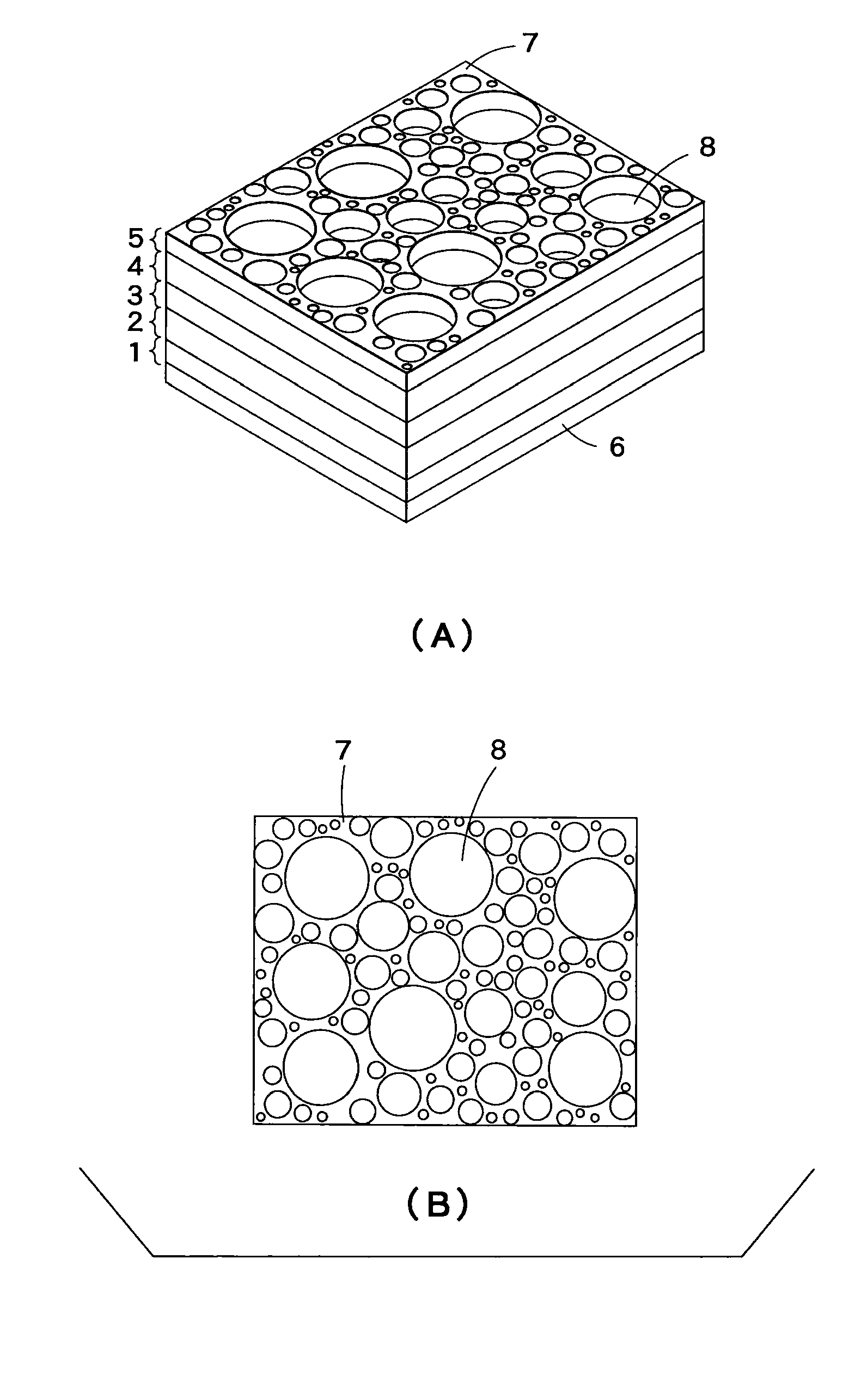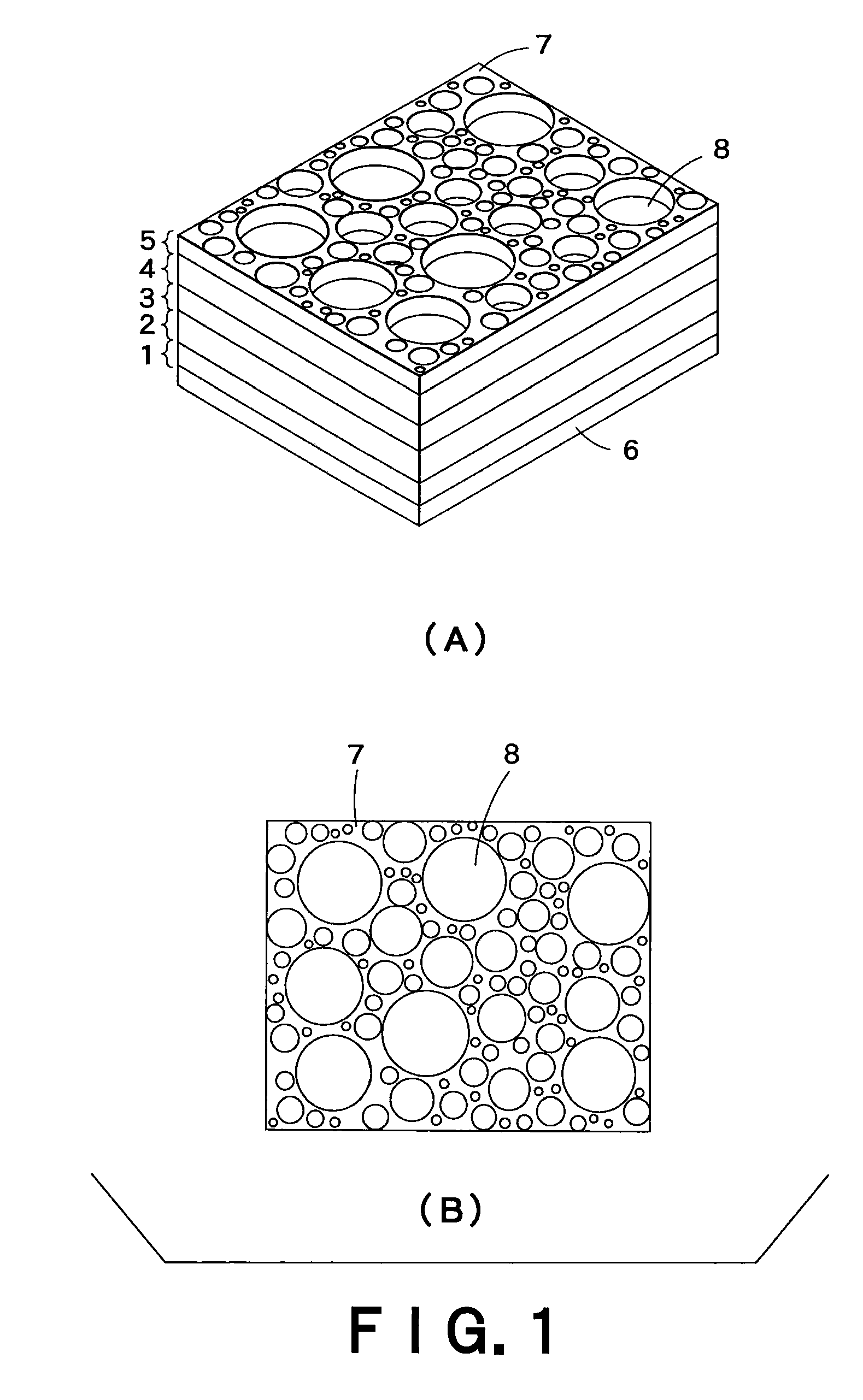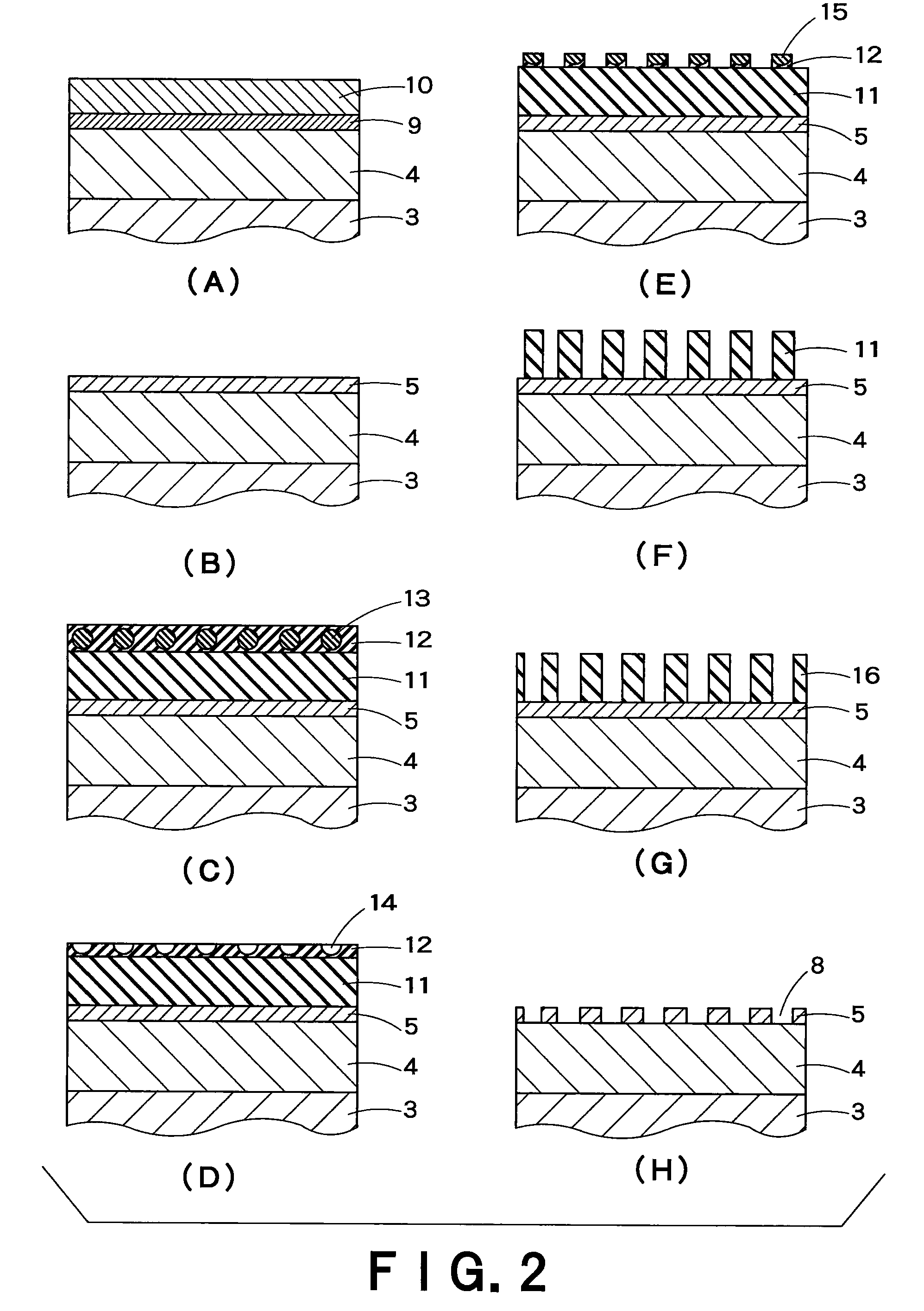Semiconductor light-emitting element and process for production thereof
a technology of semiconductors and light-emitting elements, which is applied in the direction of semiconductor/solid-state device manufacturing, semiconductor devices, electrical devices, etc., can solve the problems of small light-emitting area, device can work stably, and shaded light emitted from the active layer, so as to achieve not particularly restricted opening shapes
- Summary
- Abstract
- Description
- Claims
- Application Information
AI Technical Summary
Benefits of technology
Problems solved by technology
Method used
Image
Examples
example 1
[0071]Firstly, a semiconductor light-emitting element comprising an active layer of InGaAIP in DH structure was produced.
[0072]The (100) face of n-type Si-doped GaAs was used as a crystal substrate. On the substrate, an n-type semiconductor layer (thickness: 1 μm) made of n-In0.5(Ga0.3Al0.7)0.5P doped with Si was formed by the MOCVD method from trimethylindium (hereinafter, referred to as “TMI”), trimethylgallium (hereinafter, referred to as “TMG”), trimethylaluminum (hereinafter, referred to as “TMA”), PH3 and SiH4. Successively, an active layer of In0.5(Ga0.8Al0.2)0.5P having 0.6 μm thickness was formed thereon from TMI, TMG, TMA and PH3, and then a p-type semiconductor layer (thickness: 1 μm) of p-In0.5(Ga0.3Al0.7)0.5P doped with Zn was produced from TMI, TMG, TMA, PH3 and dimethylzinc (hereinafter, referred to as “DMZ”). Further, a current-spreading layer (thickness: 5 ρm) of p-GaP doped with Zn was formed from TMG, PH3 and DMZ.
[0073]Thereafter, on the whole bottom surface of th...
example 2
[0087]Secondly, a semiconductor light-emitting element comprising an active layer of InGaAIP in DH structure and an n-type semiconductor layer on the light-extraction side was produced.
[0088]On a p-GaAs substrate, a p-type semiconductor layer (thickness: 1 μm) of p-In0.5(Ga0.3Al0.7)0.5P doped with Zn was formed by the MOCVD method. Successively, an active layer of In0.5(Ga0.8Al0.2)0.5P having 0.6 μm thickness was formed, and then an n-type semiconductor layer (thickness: 1 μm) of n-In0.5(Ga0.3Al0.7)0.5P doped with Si was formed thereon. Further, a current-spreading layer (thickness: 5 μm) of n-GaP doped was formed thereon.
[0089]Thereafter, on the whole bottom surface of the p-GaAs substrate, an Au thin film (thickness: 50 nm) was vapor-deposited and then an AuZn-alloy thin film (thickness: 200 nm) was deposited thereon to form a p-type electrode layer. On the other hand, on the current-spreading layer, another Au thin film (thickness: 50 nm) and an AuGe-alloy thin film (thickness: 2...
example 3
[0092]Thirdly, the procedures of Example 1 were repeated except that the ohmic contacts were formed after the openings were formed on the p-type electrode layer, to produce a semiconductor light-emitting element. The obtained element gave off as intense emission as that of Example 1 did. Further, in the produced element, the Zn-diffusion layer, which was formed by the ohmic contact between the p-type electrode layer and the p-type semiconductor layer, was continuously present only in the lower part of the p-type electrode layer.
PUM
| Property | Measurement | Unit |
|---|---|---|
| thickness | aaaaa | aaaaa |
| opening diameter | aaaaa | aaaaa |
| diameter | aaaaa | aaaaa |
Abstract
Description
Claims
Application Information
 Login to View More
Login to View More - R&D
- Intellectual Property
- Life Sciences
- Materials
- Tech Scout
- Unparalleled Data Quality
- Higher Quality Content
- 60% Fewer Hallucinations
Browse by: Latest US Patents, China's latest patents, Technical Efficacy Thesaurus, Application Domain, Technology Topic, Popular Technical Reports.
© 2025 PatSnap. All rights reserved.Legal|Privacy policy|Modern Slavery Act Transparency Statement|Sitemap|About US| Contact US: help@patsnap.com



